The sales process involves identifying a prospective buyer and selling them your product or service. Think of the sales process that you encounter when considering solar panels, a new roof, or other other goods or services. Though the sales process is not often associated with healthcare, there has been a shift in the medical industry to a sales-centric approach.
Origins of Sales-Centric Perspective
The sales-centric approach in healthcare emerged as a result of the customer-centric strategy in business. The customer-centric approach focuses on providing the best experience for the customer by placing them as the business’s top priority.
By prioritizing the patient’s needs, healthcare practices will be able to form mutually beneficial relationships with their patients. The patients will benefit from top-notch, individualized patient care, while practices will profit from retaining loyal patients.
With easy access to a plethora of healthcare options through the internet, patients no longer only just have one option for their healthcare needs. Now, it is your job to market your practice as the best option available to your patients in an effort to differentiate yourself from your competitors.
Adapting the Sales Process to Healthcare
Recruit patients efficiently
When identifying prospective patients, it is important to utilize sales tactics to ensure that you are successfully reaching your target audience. Studies have found that the best day to call potential patients is on Wednesday, and the best time to call them is between 4 pm and 5 pm. On this initial call, you will be more successful if you listen more than you talk throughout the conversation. A little-known sales trick is understanding that the person who talks the most thinks the conversation went the best. Everyone wants to feel heard and understood.
If utilizing email as a means of communication, it is ideal to send your email between 2 pm and 5 pm, as that is when the majority of emails are opened. To reach maximum prospects, you should also include a clear, concise and engaging subject line that is less than 75 characters.
Examine your email metrics
To ensure that your email marketing is profitable, review your email metrics. The most important metric to examine is your open rate, which is the percentage of people who open your email out of those who received it. The average open rate for healthcare marketing emails is 22.89%. Increasing this percentage is the first step in raising your email success.
While opening your emails is the first step in patient engagement, the goal of your emails is to encourage your patients to take action. The click-through rate is the number of people who click on a link within your email out of those who open the email, and the average rate for healthcare marketing emails is 5.04%. The click-through rate allows you to see if your email is achieving its goal in encouraging your patients to take action.
Another email metric that your practice should be aware of is your unsubscribe rate. While a few unsubscribers who are no longer interested in your product or service are normal, be aware if your unsubscribe rate is significantly higher than the national average of 0.21%. If your unsubscribe rate is above 0.21%, your practice should reconsider your marketing strategies and content.
Your practice should also monitor your hard bounce rate and soft bounce rate. A soft bounce signifies a temporary problem in the email address, and a hard bounce indicates a permanent error, so it is beneficial to clear out these contacts from your future emails. The average hard bounce rate for healthcare marketing emails is 0.51%, while the soft bounce rate is 0.63%.
Deliver the right information at the right time
Once you have brought in a patient, it is essential to provide them with the right information at the right time throughout their patient journey. By overloading them with an abundance of information too early in the process, patients can become overwhelmed and less likely to engage in their care plan.
Be cost-effective
Just as businesses strive to have the lowest prices, healthcare providers should also be aiming to provide their services at a cost-effective rate. In a country where medical costs are at an all-time high, being an affordable practice will appeal to a majority of prospective patients.
Paired with an exemplary customer-service experience, your practice will distinguish itself from your competitors.
Contact LEVO Health
If you are interested in learning more about the rapidly changing nature of the healthcare industry or revolutionizing your patient experience, contact LEVO Health here, or call us at (813) 235-0830.













